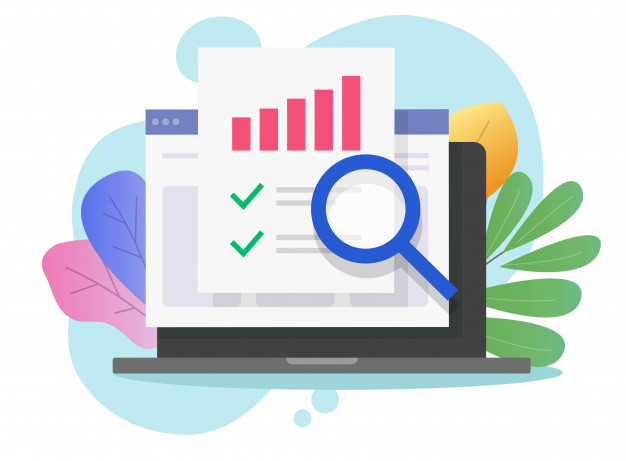What is a site SEO audit?
SEO website auditing is an in-depth analysis of the site designed to detect technical errors in accordance with the requirements of a search engine such as Google. Such an audit is carried out in order to correct all errors and successfully promote the project on the Internet.
Regardless of whether your site is new or has already been promoted, an audit should always be done before promotion.
Full website SEO audit includes two main types of SEO audit: On-Page and Off-Page (internal audit of the site and audit of external factors that affect the progress of the site).
On-Page SEO website audit – such an audit is designed to detect errors within the site or page that affect indexing and scanning by Google robots. Such in-depth analyzes are carried out by paid services and reveal the main errors: incorrect meta descriptions, tags, titles or images, errors in page coding, and many others.
Based on the results of the comprehensive analysis, a detailed report with proposals for their solution is attached.
This is what the list of errors looks like in the On-Page SEO website audit
1. Scanning of all pages Google from
Sitemap.xml – a document that has another name – a site map. This file is located in the root folder of the site and is read by all search engines. Sitemap.xml – tells robots which pages to index, when pages have been updated or appeared, and how often to check pages for updates.
If the website has a Sitemap file in XML format, we check its code for compliance using a validator. We check that the Sitemap of your site contains no more than 50 thousand URLs and weighs no more than 10 MB. If this limit is exceeded, then we divide your Sitemap into several files, and one common one with a list of all maps.
After creation, we will analyze the map in the validator and index it in the Google search engine using Google Search Console, and also add the path to the Sitemap to the robots.txt file. When the audit is started, the server will respond with an HTTP status code of 200 OK.
The required existing pages of your site should return a 200 response code in the report.
Answers with code 300
A common mistake is to use a 302 redirect when pasting pages. The right one is 301.
Sometimes there may be duplicate pages on the website, you need to check their availability and set up a 301 redirect.
Answers with code 400
When going to a non-existent page, the server should give a 404 error. Sometimes it happens that a 404 error page is displayed on the user’s screen, but at the same time a 200 code is given.
Such content can get into the index and negatively affect the ranking. The 404 error page should be designed in the style of the site and contain additional information for the user.
The usefulness and informativeness of the 404 page will have a positive effect on behavioral factors and, accordingly, will allow the site to occupy higher positions in the search results.
500 Code Responses
500 internal server error is a fairly common resource problem on any CMS as well as projects built from scratch.
Most often, the causes of problems lie in directives.
To fix the error, you need to view the server logs, correct the incorrect syntax in .htaccess, check the script execution time, and disable new plugins. If these actions did not eliminate the 500 error, restore the backup copy of the site.
To avoid such troubles, you need to periodically conduct a technical inspection of the website, conduct an audit, optimize scripts, and make backups before any updates.
2. Indexability of the website
Currently, Google’s search algorithms rely on artificial intelligence, nam on “deep learning”, the most famous among us is “Panda” and “Penguin”.
This is a complex automatic spam checking algorithm that sends messages to Google Search Console, warning webmasters about problems detected on the site.
Messages can be of the type “Action Against Site” or “Action Against Links”.
If you received an “Action Against Site” message, in this case, your site is completely excluded from search results, it is de-indexed.
In this case, you need to correct the errors pointed out by Google and send a message about correcting the errors and ask to return the site to the index.
If you received an “Action Against Links” message, in this case, you will need to clean up poor incoming links to the site and wait until Google scans the entire site again. This can take quite a long time.
Indexing of site pages in Google
We check the site in the Google index – the site command: enter in the Google search bar, for example, site: webugol.com (if all pages appear in the search, then everything is fine)
Checking the site in the index is very important for understanding, which pages are indexed and which are not. You must be sure that all the pages of the website you need are indexed and that you do not have pages with a 404 error (non-existent page)
Robots.txt
Robots.txt file is responsible for how well the site is structured and whether important pages are not blocked from indexing. Or on the control, not open or service pages of the indexing site. We can include and exclude site pages from the index using this file.
URLs of pages
Friendly URLs – all URLs of your site should be read normally with the appropriate level of nesting, you need to enter the key request of the page into them. When auditing a site, all URLs are checked, because their correct structure is very important for search engines.
Site security – SSL certificate (protocol)
SSL certificate – today it is a mandatory condition for increasing trust on the part of Google. Sites with HTTPS have more trust and ranking than sites with HTTP. Especially for sites that sell online, an SSL certificate is mandatory – it means that the buyer’s data is protected (card number and other personal data, and purchases are safe). Without this certificate, Google will see the message “Data is not protected”, such data and messages reduce the conversion rate is the website.
3. Site productivity, or site loading speed
The loading speed of a website affects its promotion and the number of rejections. If you underestimate this indicator, you can regularly lose traffic to your site, and accordingly, customers. Recent research from Google suggests that businesses lose approximately 53% of their users if their site loads faster than 3 seconds. And just one second of delay in loading the site on online trading sites leads to a loss of 20% of the total number of purchases from the site.
To check the loading speed of the site, you can use PageSpeed Insights – an official product from Google. This tool provides a site page load speed report and gives advice on how to optimize your site.
When conducting an audit of your website, our specialists will conduct a detailed analysis and identify real problems with the site and how to solve them. In our experience, the main problems that affect the loading speed of the site are bad and cheap hosting, large images on the site, wrong code of images, or poorly chosen Opencart site template, WordPress.
4. Content analysis
• title
The title and meta tags in the HTML code of pages contain important information, description, and other metadata that is intended for search engines and browsers. You can use only one title tag on the page, you can use more than one meta tag. They are all placed in thecontainer at the top of the page. The number of characters together with spaces in the thesis “title” is up to 65. The main goal of the site audit is to check the title to ensure that they were unique, there were no duplicates so that each page of your site has a title according to clearly defined rules because it is one of the main indicators for site ranking.
• description
The meta tag description is a short description of the page, 100-145 characters long. Plays the biggest role in the formation of the snippet in Google’s search results. It is placed in the HTML of the site inside the tag:
<meta name="description" content="Description of the site page." />
The description text must be meaningful, not spam with keywords is unacceptable.
The main goal of the site audit is to check the description to ensure that they are unique, and that there are no duplicates so that each page of your site has a description according to clearly defined rules.
• H1 heading
The H1 heading must be on all pages of the site and not duplicate the title. Like the title, it should be unique, attractive to the user, and contain a key phrase. What is checked during the site audit? A common mistake is duplicates of the H1 header within the same site. We check whether H1 is located at the beginning of the page, above the H2-H6 tags, whether it is unique and whether there are no duplicates.Tag “h1” – 1 pc. per page Tags “h2” – “h3” from 3 to 8 pcs. per page depending on the amount of text.
• images
When checking the images on the website during the site audit note that tag “alt” must be filled, and the key phrases should be entered into images. The purpose of the audit is to identify images without the “alt” tag and register them.
External Of-Page site audit
1. Link analysis
A site audit is conducted for links to your site from other sources. Because, for example, a large number of low-quality links with a bad domain rating will not add credibility to your site on the part of Google, but will drag it down.
It is very important to get links from high-trust resources relevant to your niche. We look at anchors and natural links. Because if you exaggerate anchor links, you can fall under the “Penguin” filter.
2. Presence of profiles in social networks
An important indicator for the ranking of your site and search engines is the presence of links to your profiles on social networks. Because it adds it adds credibility to the site both on the part of Google and on the part of visitors.
Your social account networks must be active and constantly updated.
3. Google My Business
A business must be registered with Google My Business in order to display its office or store on a Google map. The trust of the site from Google increases many times if your Google My Business is full, well designed, and contains a lot of relevant information, and reviews about your business.
Conclusion
A competent and correctly conducted SEO audit of your site will make your site more popular with search engines.
If you perform an audit of your site (at least twice a year) and eliminate all errors, then such an audit will increase traffic to your site and increase the number of customers, and they will return to the site again and again.
Contact the Webugol team to perform a full website SEO audit of your site and SEO website audit checklist.




